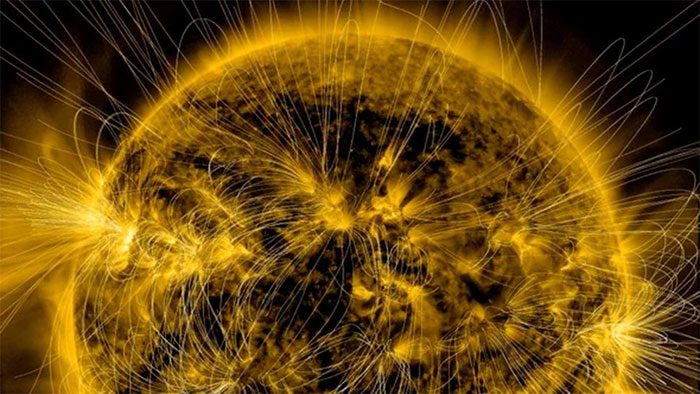The Space Weather Prediction Center of the National Oceanic and Atmospheric Administration (NOAA) has issued an “adjusted forecast” regarding the current solar cycle.
Accordingly, the upcoming solar maximum will occur earlier and be more intense than initially predicted.
With this development, scientists in solar weather forecasting must ultimately acknowledge that their previous predictions about the solar cycle were incorrect, according to Live Science.

During the solar maximum, magnetic field lines become chaotic, creating numerous sunspots, solar flares, and releasing coronal mass ejections – (Photo: NASA).
The sun is constantly changing, with a solar cycle lasting about 11 years. Our “host star” transitions from a quiet phase, known as solar minimum, to its peak activity, referred to as solar maximum.
The current solar cycle is Cycle 25, which officially began in early 2019. At that time, the Space Weather Prediction Center (SWPC) of NOAA—a panel of experts from NOAA and NASA—predicted that Cycle 25 would peak at some point in 2025.
At this maximum point, the sun is expected to be less active compared to average cycles and resembles Solar Cycle 24.
However, other solar energy scientists soon realized that the sun is not behaving as predicted by the SWPC, leading to ongoing debates throughout the past year.
Ultimately, the SWPC had to admit that their initial estimates were “no longer reliable for SWPC’s customers,” such as satellite companies and private space exploration firms.
The new update specifies that “solar activity will increase more rapidly and peak at higher levels” than originally predicted. The solar maximum is expected to occur between January and October 2024.
To avoid further inaccuracies for the remainder of Solar Cycle 25, for the first time in its history, the SWPC will switch to a more flexible forecasting system. This system will be updated at the beginning of each month.
Several indicators in 2023 suggest that the solar maximum will arrive earlier and be more intense than expected, including: the emergence of peaks in solar sunspots, large X-class solar flares, widespread auroras at lower latitudes, and increased temperatures in the upper atmosphere.
In addition, there have been appearances of light streaks known as airglow and the disappearance of noctilucent clouds that illuminate at night.




















































